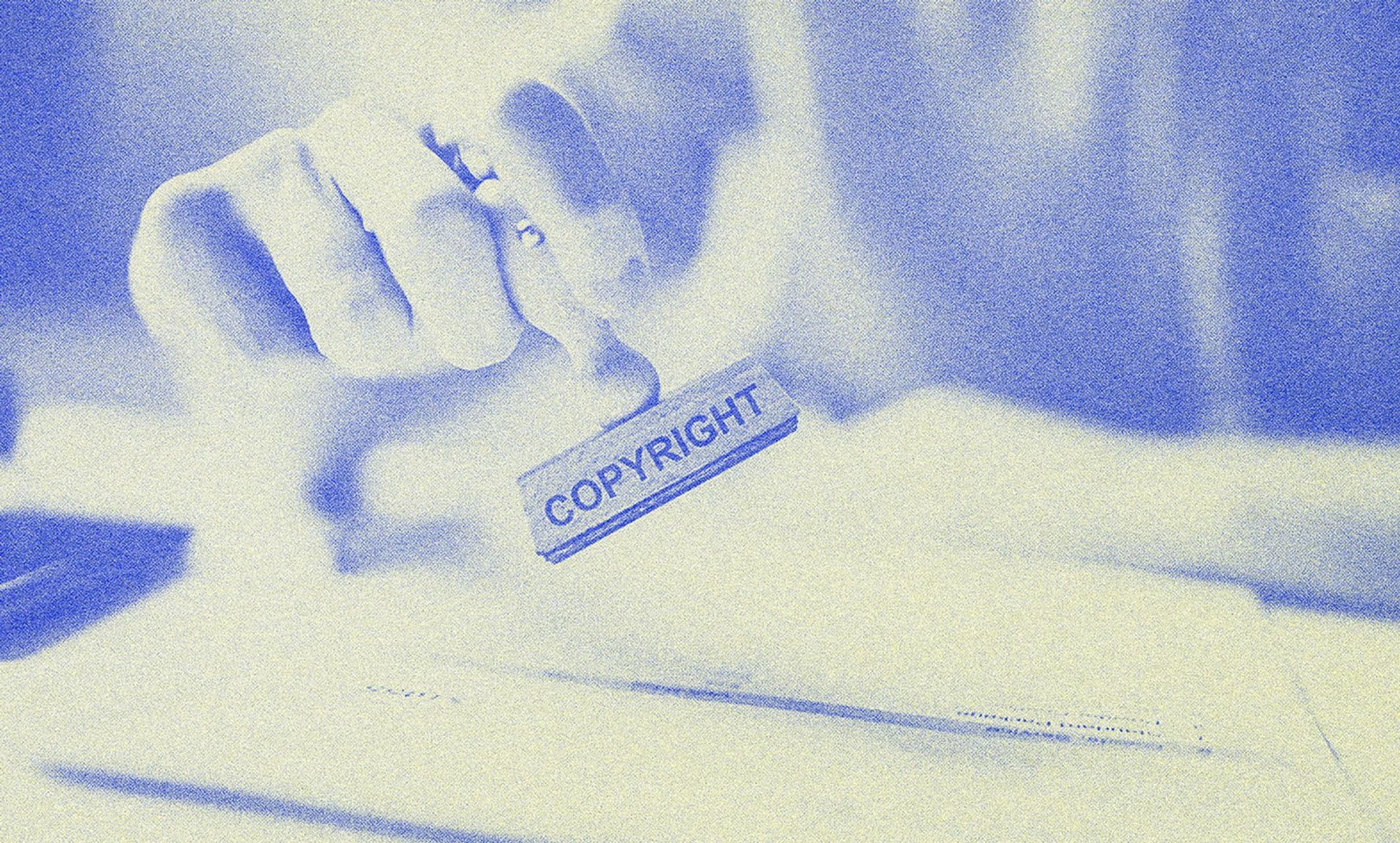Intellectual property (IP) is a term that refers to the creations of the human mind, such as inventions, artistic works, designs, symbols, names, and images.
IP is one of the most valuable assets of a business, as it can give it a competitive edge, enhance its reputation, and generate revenue. However, it is also vulnerable to theft, copying, or misuse by others, which can harm the business and its owners.
Therefore, it is essential for businesses to protect their intellectual property rights and prevent intellectual property infringement.
In this article, we’ll explore Intellectual property law and the types of IP.
What is Intellectual Property?
Intellectual Property is an asset that includes intelligible creations of the human intellect such as inventions, literary and artistic works, designs, symbols, names, and images used in commerce.
IP is protected by law through various mechanisms such as patents, copyrights, trademarks, and trade secrets, which enable creators to earn recognition or financial benefits from their creations. The IP system strives to create a conducive atmosphere for creativity and innovation by harmonizing the needs of the inventors and society at large.
IP is an important asset for businesses and individuals alike. It is fiercely guarded and protected by its owners. Thus an infringement occurs when a third party uses a protected asset without authorization. To enforce their IP rights, owners can take legal action as litigation or seek alternative dispute resolution methods such as mediation or arbitration.
The World Intellectual Property Organization (WIPO) divides IP into two categories or subsets: Industrial Property and Copyright.
Industrial Property
Industrial Property is a type of intellectual property that protects various types of creations related to industry or commerce. It covers the protection of patents, trademarks, industrial designs, and geographical indications.
As we’ll cover in the following, patents grant protection to inventions that meet the criteria of being new, useful, and non-obvious. Trademarks protect distinctive signs that identify the source or quality of goods or services. Industrial designs protect the appearance or shape of products. Geographical indications protect the names of products that have a specific origin and quality.
Industrial property law is based on national, regional, and international laws and treaties, such as the Paris Convention for the Protection of Industrial Property (1883) and the Agreement on Trade-Related Aspects of Intellectual Property Rights- TRIPS (1994), which are overseen by WIPO.
In the US, industrial property can also mean industrial real estate. This is a type of property that is used for trade or manufacturing activities, such as production, assembly, or repair of products from raw materials or parts.
Industrial property in general can include factories, warehouses, workshops, or distribution centers. An industrial property is different from commercial property, which is used for retail or office purposes.
Copyright
A creative work can only be copied, distributed, adapted, displayed, and performed by its owner for a limited time. This exclusive right is called Copyright. It protects the original expression of an idea, not the idea itself. It applies to works that are fixed in a tangible form of expression, such as books, music, paintings, films, and software.
Copyright law is based on, just like Industrial properties, national, regional, and international laws, and treaties that regulate the rights and obligations of the owners and users of creative works. Some of the major international agreements for intellectual property law are the Berne Convention (1886), the TRIPS Agreement (1994), and the WIPO Copyright Treaty (1996).
Copyright law grants the owner certain exclusive rights, such as the right to reproduce, distribute, perform, display, or adapt their work. However, these rights are subject to limitations and exceptions based on public interest considerations such as fair use or fair dealing.
You can use works that are protected by copyright without the owner’s permission if you are doing it for reasons such as reviewing, commenting, reporting news, educating, studying, or researching. When the copyright of a work expires, it enters the public domain, where anyone can use it without permission or payment.
The length of protection varies depending on the type and date of the work but generally lasts for the author’s life plus 70 years or for 95 or 120 years for anonymous works and works-for-hire.
What are The 4 Types Of Intellectual Property?
There are four main types of IP rights that businesses can use to protect their IP:
– Patents: If you have invented something new and useful, you can apply for a patent to get the sole right to make, use, sell, or import it for a certain period of time, usually 20 years.
A patent can cover anything from a gadget to a chemical compound.
To get a patent, you have to describe your invention in detail and show that it is not obvious to someone skilled in the field.
– Trademarks: A trademark is a sign that distinguishes the goods or services of one business from those of others, such as a word, a logo, a slogan, a color, a sound, or a shape.
A trademark can last indefinitely as long as it is used and renewed periodically. It can help a business build its brand identity and reputation and prevent confusion or deception among consumers.
Learn How to get Your Trademark Registered
– Industrial Designs: An industrial design can be a shape, a pattern, a color combination, or a three-dimensional feature. It is the ornamental or aesthetic aspect of a product.
An industrial design can be protected for up to 25 years if it is registered and renewed periodically. It can significantly enhance the appearance and appeal of your product and increase its marketability and profitability.
– Trade Secrets: A trade secret is any confidential information that gives a business an advantage over its competitors. This category of IP includes a formula, a method, a technique, a process, or a customer list.
A trade secret does not require registration or disclosure but must be kept secret by reasonable measures.
How to Protect Intellectual Properties?
There are several methods that businesses can use to protect their IP rights and prevent IP infringement.
Registration
The first method to protect your IP is to register it with the appropriate authorities in your country or region.
Registration will grant you legal recognition and protection for your IP and allow you to enforce your rights against infringers. Registration will also help you avoid conflicts with other IP owners and prevent others from registering similar or identical IPs.
Monitoring
The second method to protect your IP is to monitor it regularly and keep track of its use and status.
Monitoring helps you detect any unauthorized or improper use of your IP by others and take timely action to stop it. Monitoring also helps you maintain and renew your IP rights and avoid losing them due to non-use or expiration.
Enforcement
You can also protect your IP by enforcing it against infringers and violators. Through Enforcement, you defend your IP rights and interests and deter others from infringing them.
Enforcement can be done through various means, such as sending cease and desist letters, filing complaints, initiating lawsuits, seeking injunctions, claiming damages, or requesting customs seizures.
Management
Intellectual Property Management is to help you maximize the value and potential of your IP and leverage it for your business goals and objectives.
Management can involve various activities, such as licensing, franchising, transferring, selling, or donating your IP to others.
IP is one of the most critical assets of a business. It can give it a competitive edge, enhance its reputation, and generate revenue. However, it is also vulnerable to theft, copying, or misuse by others, which can harm the business and its owners. Therefore, it is essential for businesses to protect their IP rights and prevent IP infringement. This can be done by registering, monitoring, enforcing, and managing their IP effectively and strategically.
FAQs about Intellectual Property Protection
What is Considered Intellectual Property?
IP refers to the creations of the mind, including inventions, literary and artistic works, designs, symbols, names, and images used in commerce.
What is Not Considered Intellectual Property?
Ideas, facts, methods, processes, systems, or skills that are not fixed in a tangible medium are not considered IP.
How do I Protect my Product from Being Copied?
You can protect your product by applying for a patent, trademark, or copyright.
What is the Violation of Property Rights?
Violation of Property Rights occurs when a third party uses an asset protected by IP law without proper authorization.
Is a House an Example of Intellectual Property?
No, a house is not an example of intellectual property. A house is a physical object that can be owned, bought, or sold. IP is a creation of the mind that can be protected by law.
What are Some Examples of Intellectual Properties?
Some examples of IP in different industries are: Apple’s iPhone patents, Google’s search algorithm; Nike’s swoosh logo, Levi’s jeans; Disney’s Mickey Mouse character, Marvel’s Avengers franchise; Coca-Cola’s bottle shape and formula, Starbucks’ green mermaid logo.
What is the Difference between Property and Intellectual Property?
Property is anything that can be owned or controlled by a person or entity. Intellectual property is a subset of intangible assets that includes original works of authorship, inventions, designs, symbols, and names.
What is the Law of Intellectual Property?
The law of intellectual property is the body of rules and principles that governs the creation, protection, and use of IP rights.
What are the Four Types of Intellectual Property Protection?
The four primary types of IP protection are- patents, trademarks, copyrights, and trade secrets.
What is an Example of IP Protection?
A patent that is granted for an invention, which gives the patent owner the exclusive right to decide how or whether the invention can be used by others.
What are the Key IP Issues?
Identifying and protecting IP assets; preventing infringement; extracting value from IP; and enforcing IP rights.
How can I Enforce Intellectual Property Rights?
They can be enforced through legal measures such as litigation or alternative dispute resolution methods such as mediation or arbitration.
What is the Difference Between Copyright and Intellectual Property?
Copyright protects the rights of owners over their literary and artistic works, whereas Intellectual Property is a broader term that includes other creations of mind as enumerated in earlier question(s).
How can I Prevent IP Infringement?
Prevent intellectual property infringement by doing research, getting consent, following rules, raising awareness, and taking action.
How can I Report IP Infringement?
Report IP infringement to IP offices, authorities, agencies, courts, online platforms, or IP owners.
Categories




